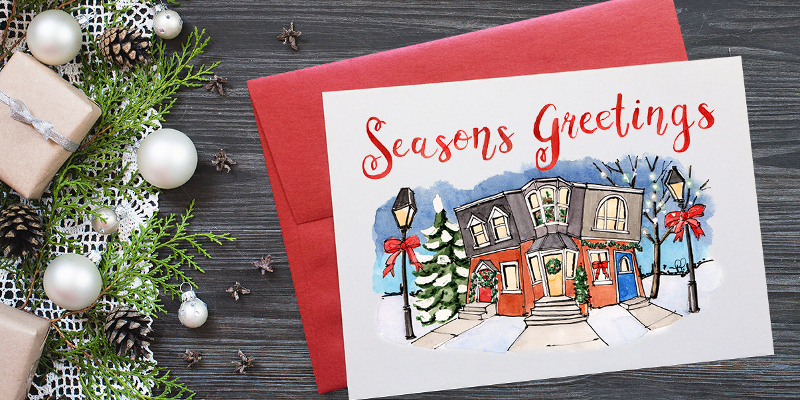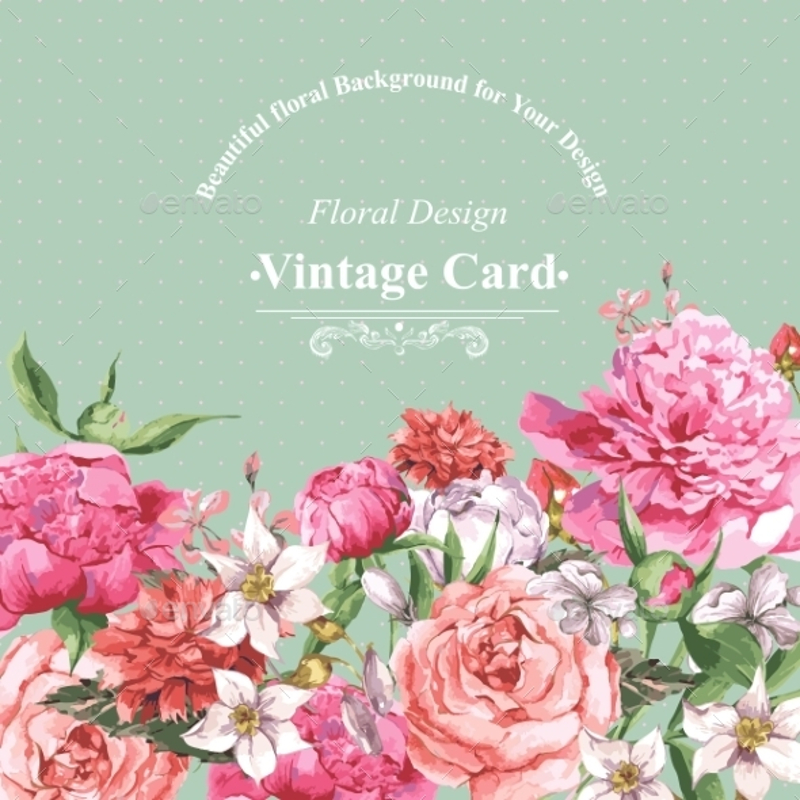11+ Watercolor Greeting Card Examples to Download
As arts and design are evolving from generation to generation, different art styles emerged and different sample applications can be observed. Designing something can be seen anywhere—art is everywhere. The challenge of every artist is to create something out from his emotions, from the outburst of his feelings, incorporating the basics and fundamentals of art but still pouring out his own art style, avoiding plagiarism. Different artists have different art styles and different mediums so one must respect one another’s art and prevent criticisms.
Of the different mediums—oil paint, acrylic, latex, watercolor, color pencil, pastel, charcoal, graphite—commonly used, we are going to discuss the properties and qualities of watercolor and its effect when used as a design for your greeting cards. Why greeting cards? Because there a lot of events and occasions and reasons to greet someone!
The next part of this article will explain further about watercolor and greeting cards.
Overview of Watercolors
Watercolor, as the name suggests, uses water to liquefy a water-based pigment that is to be applied on a surface most typically on papers. Watercolor is said to be inherently delicate and subtle and mostly transparent. Application of watercolor will vary greatly from artist to artist and depend on the brand of watercolor as well as the paper used. Some watercolors become chalky when dry and some provide a little gloss to the paper. Some have bright colors while some are dull and dead.
However, of these different qualities of watercolor, in general, watercolor has distinct characteristics that are separate and apart from all other wet mediums. So, the next discussion will tackle the qualities and characteristics of watercolor.You may also see Thank you Cards.
Qualities and Characteristics of Watercolor
Different watercolor brands have different effects on papers and different papers can also affect the output of a watercolor artwork. However, there are certain common characteristics and basic assumptions in color and quality if we are going to say “watercolor.” These are as follows.
Transparency
In a quick glance, we can immediately distinguish transparent from opaque colors. However, the definition and explanation are a bit challenging. Hope the next explanation will give enlightenment and clarity to the distinction of opacity and transparency.
Transparency, as one of the characteristics of watercolor, is the property of the color to get through to the next layers or colors. This is in contrast with opaque colors in which light will never get to the lower layers but instead will just bounce off.
In the image above, the transparent ones are those that go beyond the black line such as ultramarine blue, alizarin crimson, and Winsor red, while the opaque ones are the ones that are just on top of the black line’s surface such as cadmium red light and cobalt turquoise light.
Take note that these are just examples and the not actual colors that are transparent or opaque for different brands of watercolor produce different transparency and opacity. Watercolors have four transparency categories:
- Transparent. As stated above, transparent colors are those that allow light to come through on a sheet of paper.
- Opaque. Opaque colors are the those that do not let the light to pass through, thus overlapping a certain color and producing an effect that is thicker and cloudy.
- Semi-transparent. These colors are those that are somewhat transparent since they pass through lower layers but does not totally get through the layers as you can still see pigments that remain on a top layer.
- Semi-opaque. Similar to semi-transparent, however, there is more inclined to being opaque than being transparent.
Staining
In testing for staining and non-staining property of a watercolor, observe them on a sheet of paper. Place a patch of watercolor on a paper, let it dry, and try to scrape off the colors using a hard brush. The amount left of watercolor on the paper will determine the staining or non-staining quality of your watercolor.
- Staining. For watercolors that have staining properties, you can observe that there are still traces of pigments from the watercolor left on the paper after you scrape them.
- Non-staining. On the other hand, for non-staining, you will see that the watercolor pigments are totally lifted after you scrape them and the paper is reverted to being white.
Granulating or Sedimentary
In order to test whether your watercolor is granulating or sedimentary, try to have a little experiment on your watercolor on a sheet of hot press papers. Hot press papers, in contrast to cold press papers, have a smooth surface that is suitable for painting smooth-edged images with precise marks and strokes or with lots of details. Let your watercolor dry and observe the behavior of the granules on the paper.
- Granulating. A watercolor is said to be granulating if the pigment is said to be grainy and has a texture
- Sedimentary. If the effect is smooth and the particles are smaller, then it is a sedimentary watercolor.
Fugitive
Fugitive and non-fugitive characteristics of a watercolor can be determined on how long the colors can sustain over time and the time it takes before it will fade. It also depends on the lightfastness of your watercolor.
- Fugitive. Fugitive watercolors are those the can quickly fade over a short span of time; thus, these are not highly recommended for exhibits and displays.
- Non-fugitive. These are those that can last long or those that will never fade at all, those brands that are widely known and are usually preferred by elite watercolorists.
Brief Overview of Greeting Cards
Greeting cards are a piece of paper that features not merely greeting but also express emotions and expressions of love and other sensations. There are several types of greeting cards that you must be aware of: standard, personalized, photo, musical, electronic, printable, etc. Standard greeting cards are those that are printed on a rectangular and folded high-quality paper which incorporates decorations in front with a printed message inside and enough space for an additional message in case the sender wants to add an extra personal email message to the recipient. Personalized greeting cards are those that are made personally, and mostly hand-made, by the sender with decorations and words preferred by him or her. Photo greeting cards are photos that are printed on a high-quality paper with some decorations that are appropriate for the occasion and with greetings may it be pre-printed or handwritten. Musical greeting cards are those that commonly comes in 3d and, when opened, produce a musical sound, usually playing a “Happy Birthday” song. Electronic greeting cards or e-cards are those that are sent through the internet using sites, usually social media sites. Lastly, printable greeting cards are those that are available and customized online and are ready for printing.
Watercolor as a Design for Your Greeting Cards
Thank You Watercolor Greeting Card
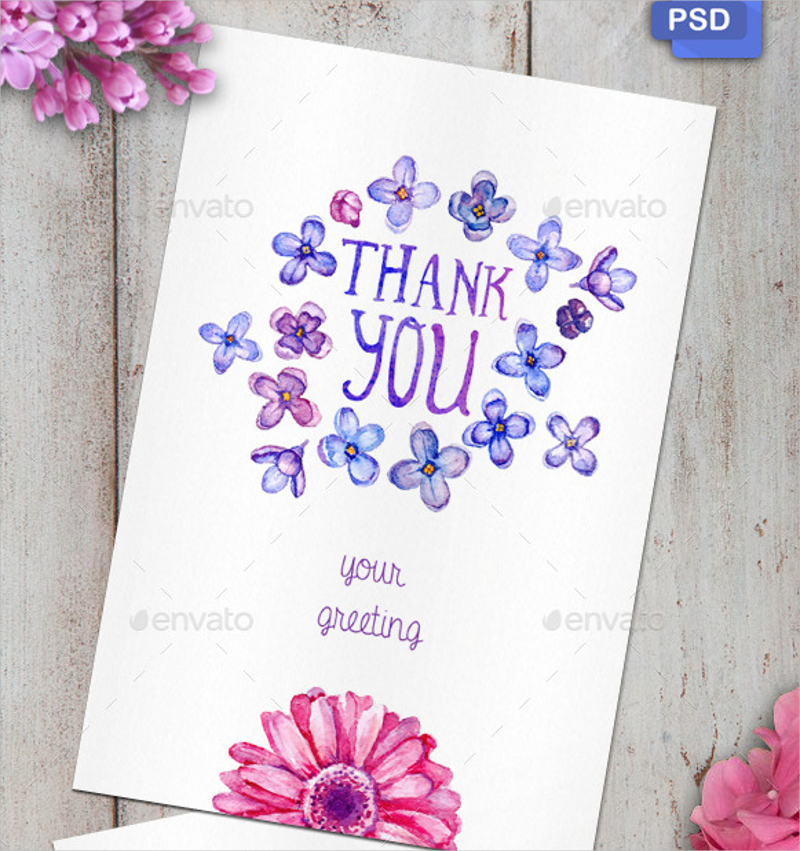
Watercolor Roses Greeting Card

Vintage Watercolor Greeting Card
Floral Wreath Greeting Card
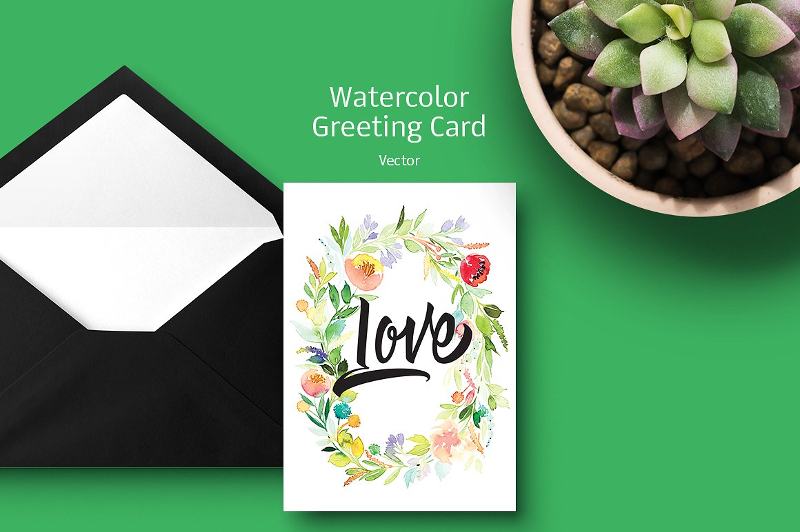
Watercolor New Year Greeting Card
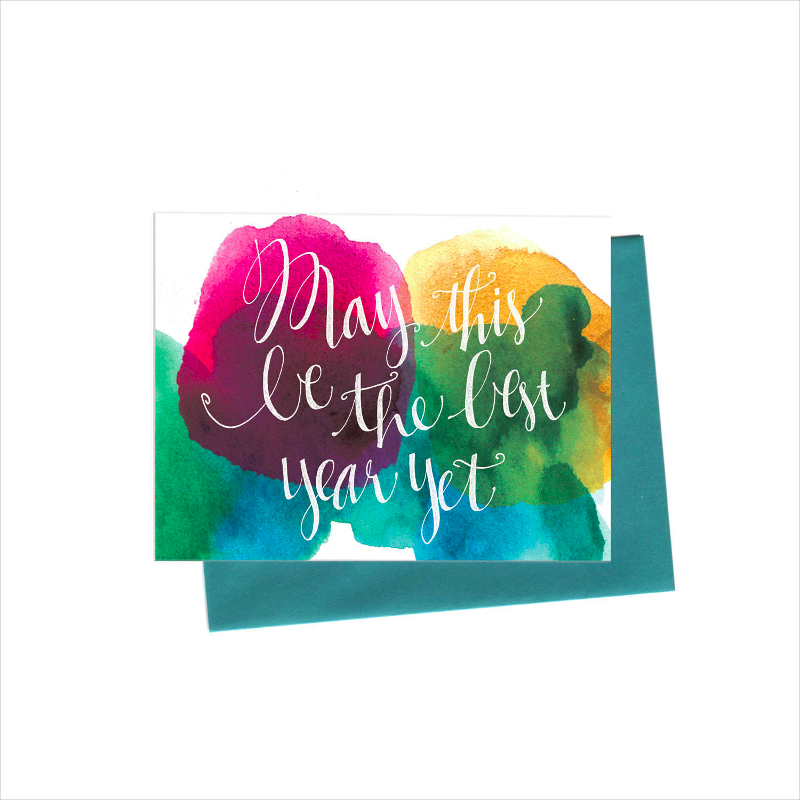
Watercolor Birthday Greeting Card
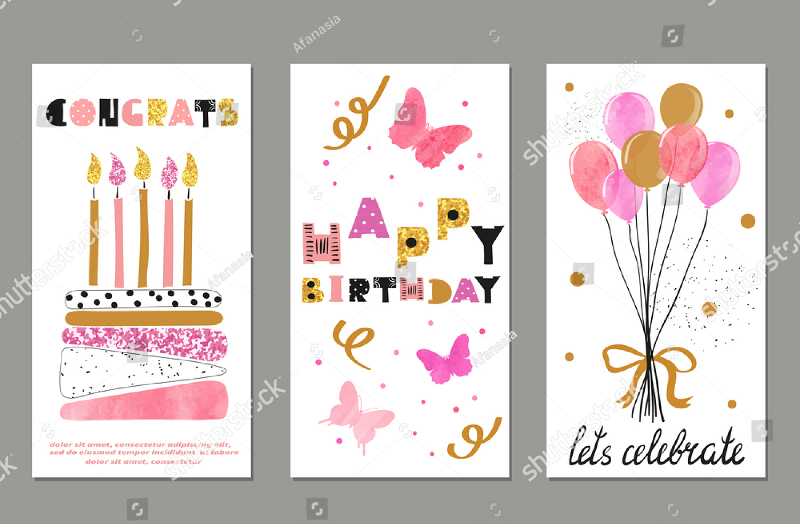
Handpainted Watercolor Greeting Card

Christmas Watercolor Cards
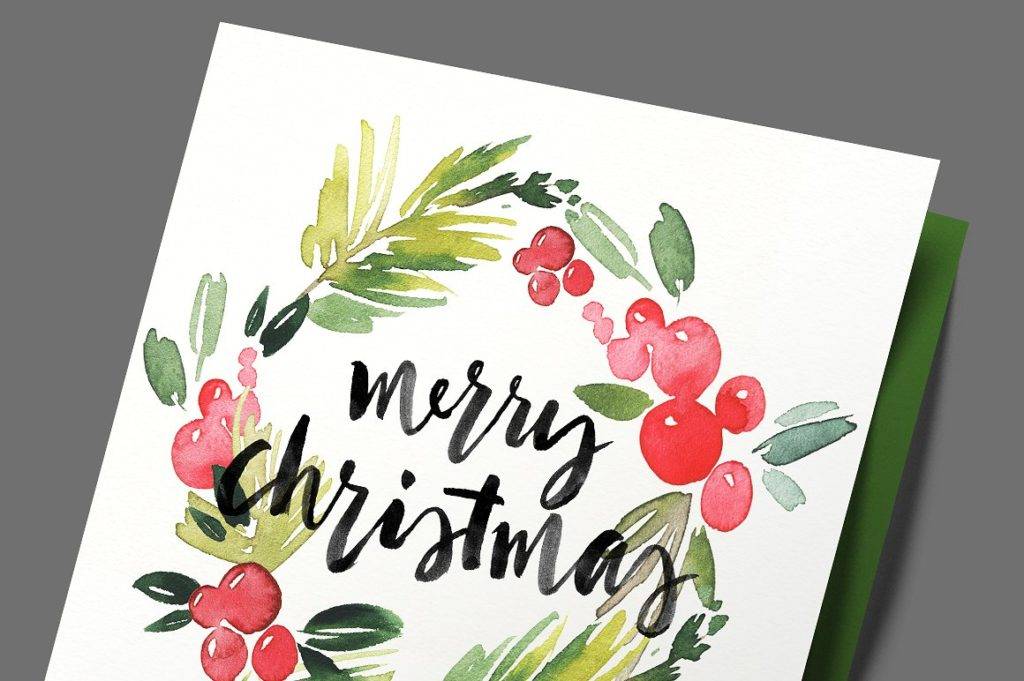
Watercolor Floral Greeting Card
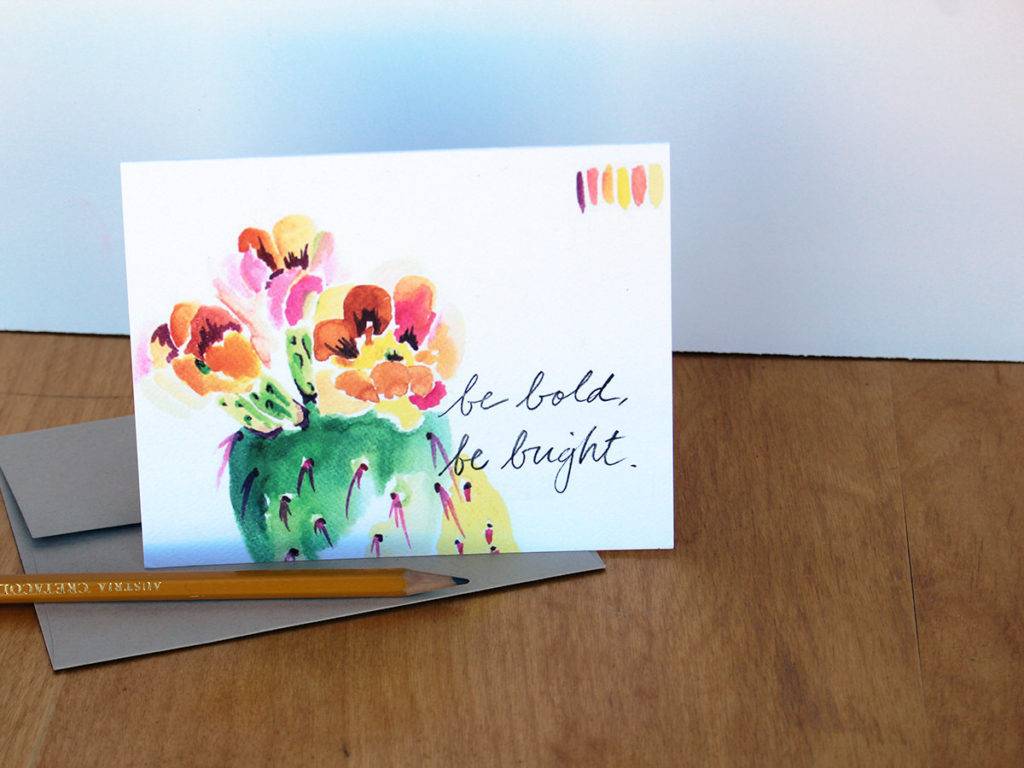
Love You Greeting Card
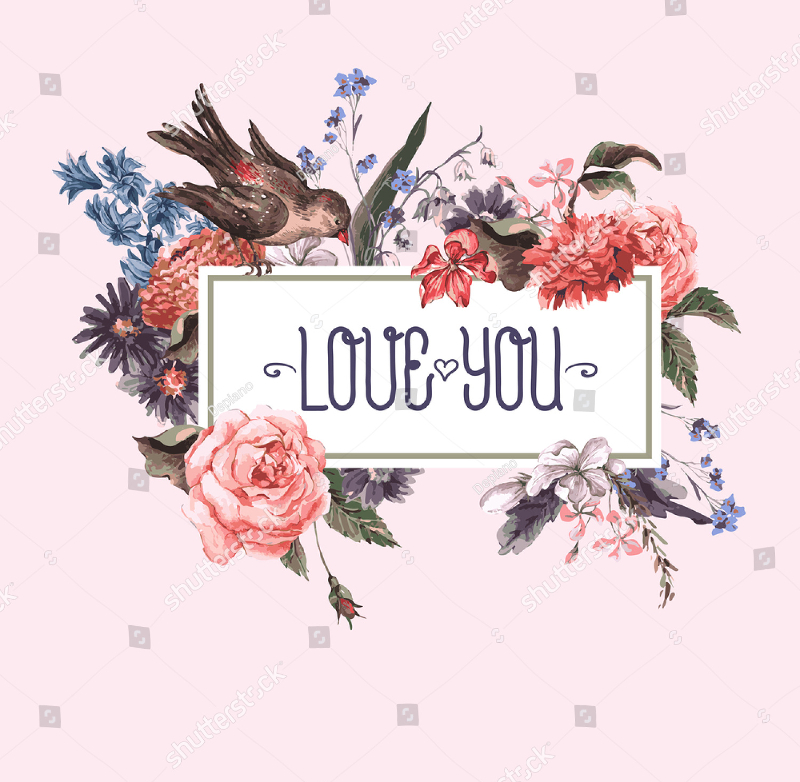
Reasons to Send Greeting Cards
There are so many reasons to send greeting cards. Some of them are for celebrations like birthday card designs, anniversaries, graduation, wedding, and retirement, holidays like Christmas, Halloween, Parent’s Day, Thanksgiving, and Valentine’s Day, and other sentiments such as thank you, miss you, sympathy, an apology.
Whatever your reasons are, greeting cards are a way to convey how you feel to a certain person. You never know the pleasure and delight that the recipient feels upon receiving the card. It may be something small to you, but it matters a lot to the person you are giving the greeting card too. So be thoughtful enough and take time to communicate to the people dear to you through greeting cards!


